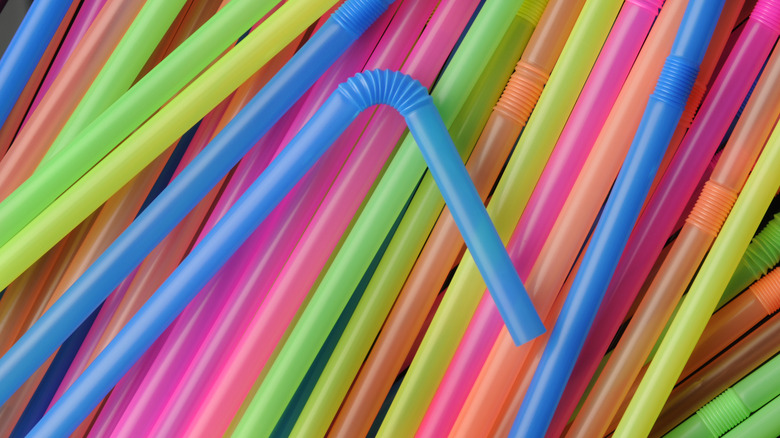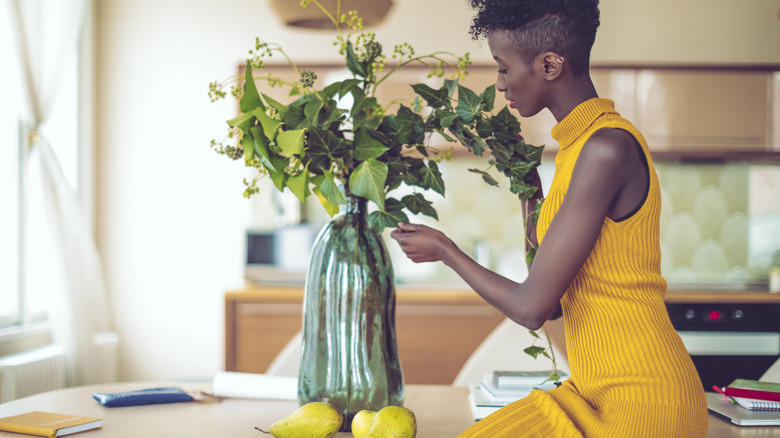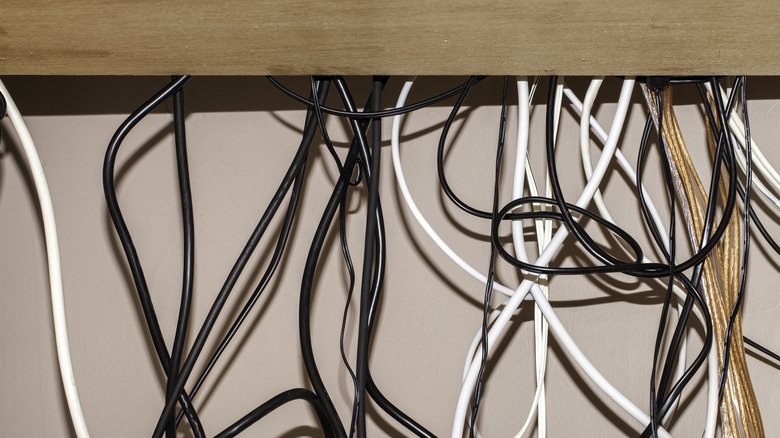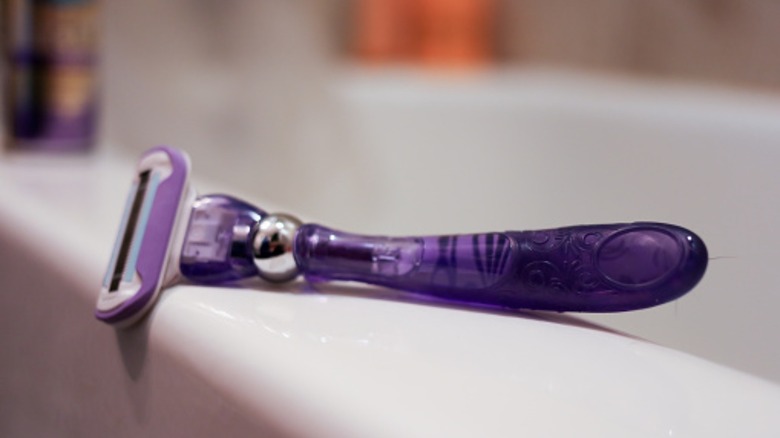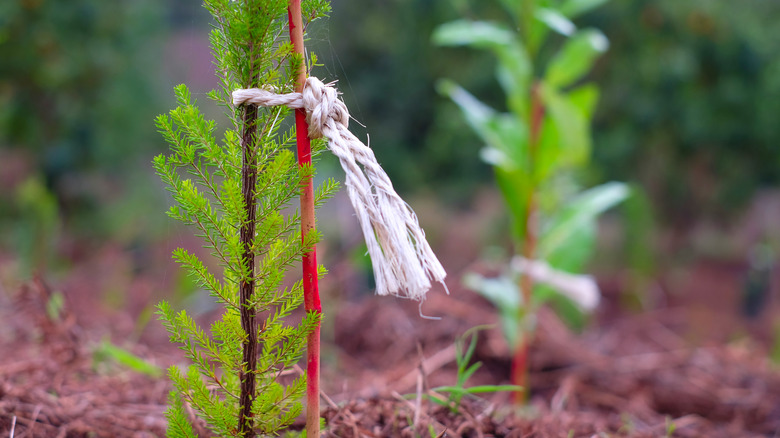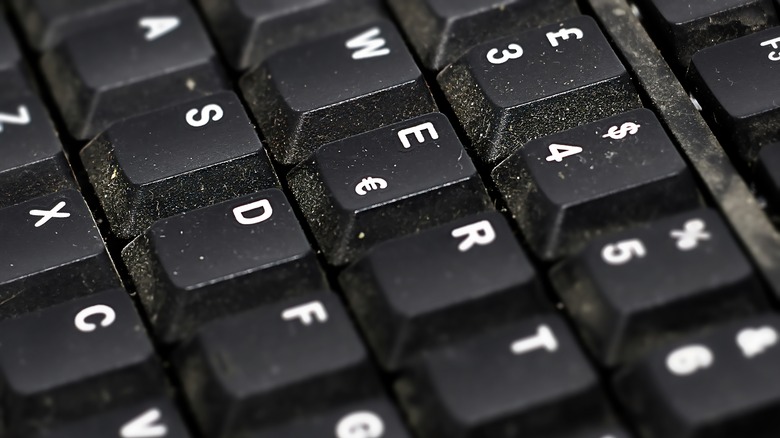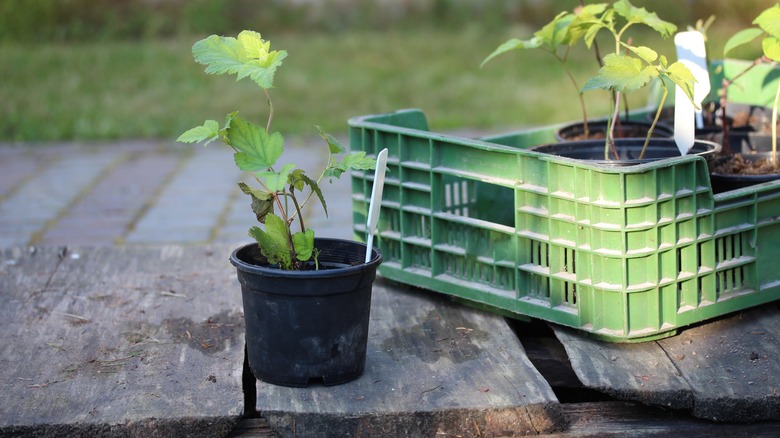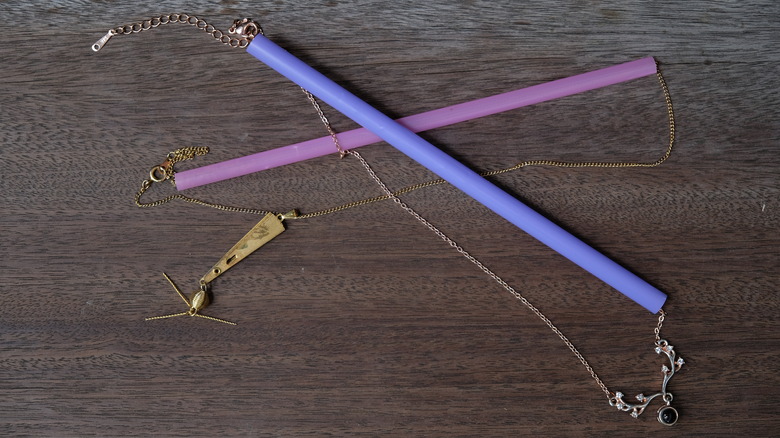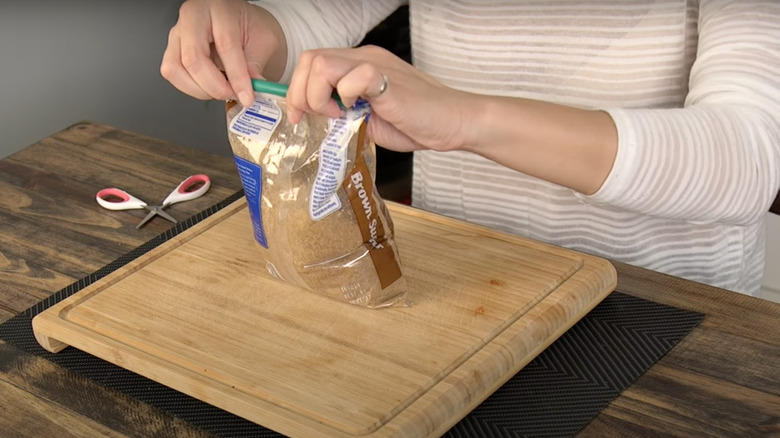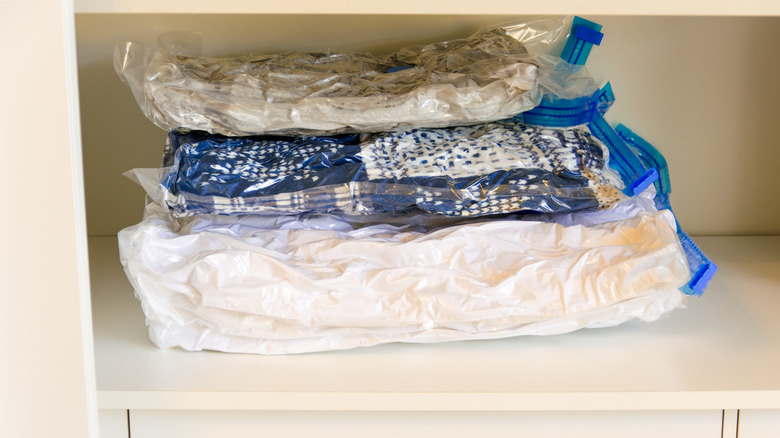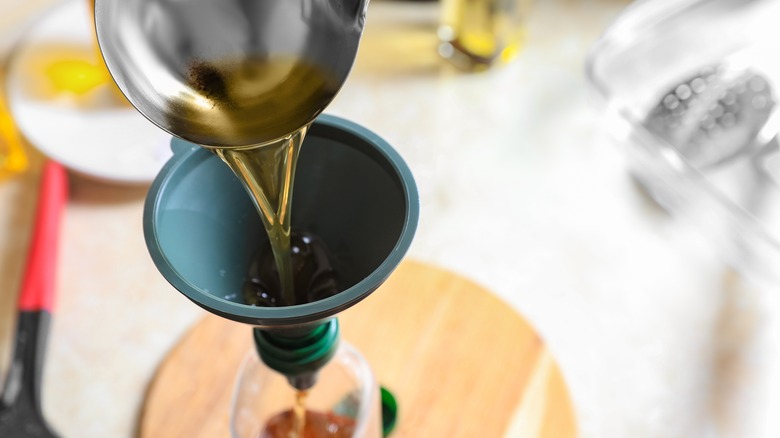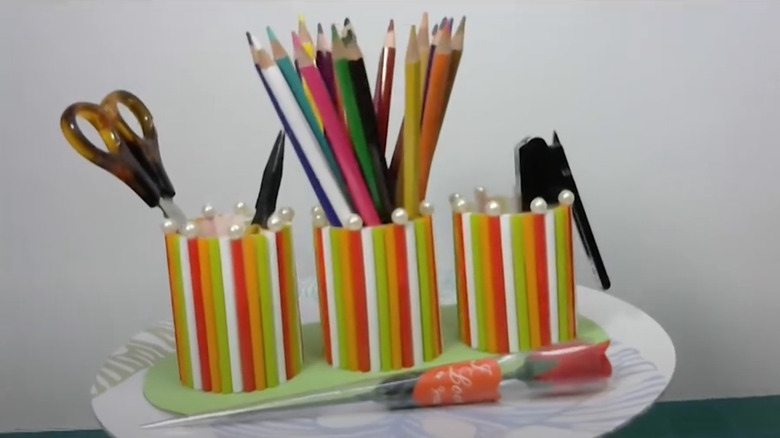Smart Ways To Repurpose Drinking Straws In Your Home And Garden
In recent years, plastic straws have become a prime target for environmentalists looking to cut down the amount of plastic waste people produce on a daily basis. According to data from a paper published in Science, nearly 9 million tons of plastic waste make their way into the oceans each year. Plastic straws make up a small percentage of that massive figure, but they've become a major point of focus because going without a straw or opting for something reusable is one of the simplest swaps most people can make. With that being said, however, there still might be times when you find yourself ready to toss a plastic straw in the trash. The most eco-friendly way may have been going without the straw in the first place, but the second best choice is to further extend the straw's life by reusing it.
Plastic straws are simple, flexible, and fairly durable, so they be used in plenty of different projects around your home and your garden. The fact that they don't readily break down might be a major issue when it comes to environmental factors, but it's a massive benefit when you're incorporating them into DIY projects, especially if you plan to use your straws outdoors or in a situation where they'll be exposed to water regularly. With a bit of creativity, you'll be able to transform a piece that would otherwise become plastic waste into something that's useful beyond just sipping your drink.
Extend flower stems
Bouquets that mix different kinds of large flowers, greenery, and filler are some of the most visually interesting arrangements out there, but it's likely that not every stem you've sourced is the same length. If you find that some of your flowers are cut too short, especially for taller vases, use a straw to lengthen their stems. All you need to do is slide the straw over the end of the stem, and your flower will get the additional height it needs without being cut off from the water. If the stem is too thick, you can also cut the straw and apply it like a cuff.
Smooth caulk lines
Applying caulk, whether you're sealing the edges of a window, installing a bathtub, or repairing a crack, is an incredibly easy job, especially if you have the proper tools. What's not so easy, however, is smoothing it out to the perfect finish. There are plenty of different ways to accomplish this task, and it seems like just about everyone has their own trick that they swear by, but one of the simplest only requires a straw. After you apply your bead, run the straw over it at about a 45-degree angle in one continuous, straight line, and you should be left with a seamless caulk application.
Label cords
While the backs of our televisions and computers might not be as full of cords as they were a couple of decades ago, we still have to utilize plenty of tangly wires on a daily basis. Unfortunately, many of these cords look strikingly similar, so trying to pick out what you're looking for can feel more like an involved puzzle than a simple task. To combat this issue, consider labeling your cords with straws. Cut the straw into a short section, then snip down the side to make a cuff. Write on the label with a permanent marker, pop it over the cord, and you're good to go.
Razor cover
Razors typically come packaged with a small piece of plastic covering the blade, but after the first use, you've likely already tossed this tiny protector in the trash. If you need a makeshift cover, whether for travel purposes or simply because you don't want to leave the exposed blade in your shower, consider making one out of a straw. Cut a piece of straw the length of your razor's head, then cut a line down the back so it will fit over it. The flexible plastic will allow the makeshift cover to fit multiple different sizes of blades without sacrificing protection.
Small plant support
Larger plants might do well with stakes and trellises to lean on for support, but when you're just working with something smaller, larger implements can seem like overkill, sometimes even dwarfing the size of the plant itself. If all your plant needs is a tiny bit of help staying upright, try using a straw. Stick the straw in the ground about an inch away from the main stalk of your plant, then attach the plant using garden ties, twine, or scrap fabric. Once it outgrows its need for such a tiny support, you should be able to easily locate and remove the straw from the plant.
Keyboard cleaner
Getting a bit of dust or collecting some crumbs on your keyboard is inevitable, but that doesn't mean that it isn't annoying. Unfortunately, most traditional cleaning methods aren't great for getting into the nooks and crannies, especially if your keyboard has raised keys, but a simple straw can be the saving grace you need. Wipe everything down to clear any debris or oils off the surface of your keys, then place the straw in your mouth and blow out any crumbs and dust lodged in places you can't reach. It might feel a bit silly, but it's essentially like DIYing a can of compressed air.
Garden markers
Garden markers are essential if you plan on cultivating multiple crops in one area, especially while they're young, but there's no reason to spend money on items designed for that purpose. Markers can be made out of just about anything, straws included. Write the name of your plant along your straw and stick it in the ground nearby, or attach a flat piece of wood or plastic to the straw and use it as a base if you need a larger writing surface. Just make sure the straws are stuck firmly into the ground. Because they're so lightweight, they can easily fly away and become litter.
Store necklaces tangle-free
Necklaces are notorious for tangling up and becoming a mangled mess, seemingly despite our best efforts. A straw can help prevent this issue and ensure your favorite jewelry items stay separate and undamaged. Simply open up the clasp of your necklace as if you were to put it on, then thread a straw over the chain. Clasp your necklace closed again, and you'll no longer have to worry about tangles. This hack is great for when you're traveling. Being jostled around in luggage is a recipe for knots and kinks, but it can also find a use in your everyday jewelry box.
Seal bags
Chip clips are notorious for disappearing just when you need them. So, next time you're in a pinch, consider making your own. For this hack, you'll need two straws, your bag, and a pair of scissors. Begin by rolling the end of your bag around one of the straws until it's completely closed. Next, cut the second straw in a straight line down its entire length. Take this cut straw and place it over the rolled piece of the bag you're sealing. With a bit of adjusting, you should find that your bag is now tightly closed, and there's no air flowing in and out.
Hold on to small screws
Regular-sized screws, like those used to assemble furniture or hang décor, are already difficult to keep track of. Things get even higher stakes when you start working with the teeny tiny screws commonly used in electronics and toys. Consider using a straw if you need a makeshift holder to ensure they don't go rolling off your desk. Staple one end of the straw shut to create a long pouch, then fill it up with your screws. Fold the other end over and staple, and you have a typically brightly-colored container that's much easier to keep track of than a couple of minuscule pieces of metal.
Simple vacuum sealer
Vacuum sealing is incredibly helpful if you need a way to save space when storing or moving soft items like fabric and stuffed animals. As it turns out, however, you don't actually need any special equipment to accomplish this yourself — just a straw and an airtight plastic bag. Load up your items into the bag, then zip it most of the way closed. Squeeze the bag to get out most of the excess air, then place the straw in the small gap you have left in the zipper. Suck out the remaining air to fully compress everything, then quickly zip the bag shut after removing the straw.
Funnel extender
Funnels are incredibly useful around the house, from the garden to the garage, but sometimes, you need an extender to help navigate an awkward or hard-to-reach space. Whether you're working with your own DIY funnel or pouring into one made of hard plastic, a straw can do the trick. Simply stick your straw in the smaller part of your funnel to give it an extra few inches. If it's a good fit, it should slide right in and stay put without leaking, but you can also add a strip of duct tape around the connection to make sure nothing seeps out or detaches mid-pour.
Pen holder
Thanks to their relative durability and how easy they are to find and collect, plastic straws can also make for a convenient building material for small objects like pen holders. Simply cut down your straws to however tall you want your organizer to be, hot glue the straws together into your desired shape, and then add a bottom made out of card stock, cardboard, or a piece of recycled plastic to finish everything off. After you're done, leave it just like that if you're a fan of the look, or go in with some paint or accessories, like ribbons and stickers, to customize your desktop organizer even further.
